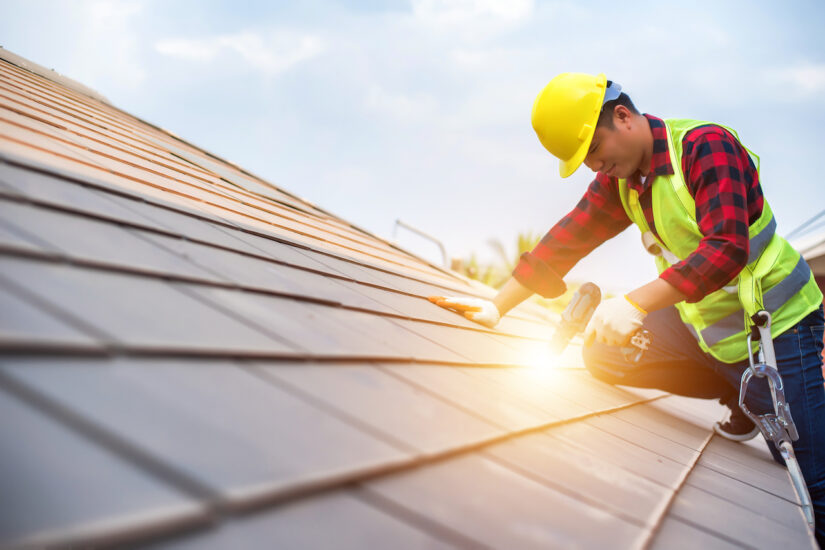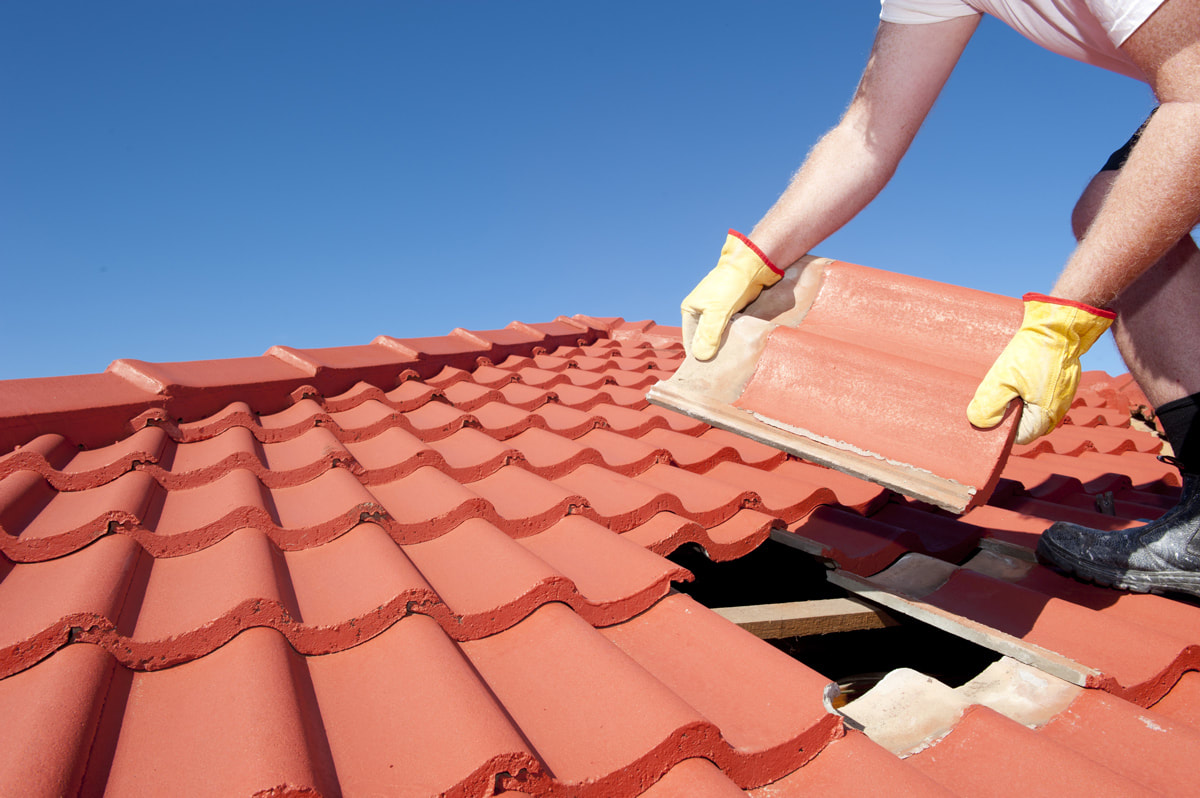Roofers Oahu: Proficient Professionals for Roof Installations and Services
Roofers Oahu: Proficient Professionals for Roof Installations and Services
Blog Article
Comprehending the Various Types of Roofs: A Comprehensive Overview for Homeowners
With a variety of options-- ranging from the typical gable to the modern level-- each kind presents special advantages and challenges that should line up with the homeowner's particular needs and ecological factors to consider. As we discover the details of different roof types, it becomes noticeable that one size does not fit all; the ideal selection might stun you.
Saddleback Roof
Gable roofing systems, characterized by their triangular shape, are among the most preferred roofing designs due to their simplicity and performance in shedding water and snow. This style features two sloping sides that meet at a ridge, enabling for reliable drainage and decreasing the danger of water build-up. The steep pitch commonly associated with gable roofing systems boosts their ability to take care of hefty rainfall, making them suitable for various climates.
Along with their functional benefits, saddleback roofs supply aesthetic versatility. They can be adapted to different building designs, from typical to contemporary homes. The layout can also fit extra functions such as dormer windows, which enhance natural light and air flow in the attic space.
Additionally, saddleback roofs give adequate room for insulation, adding to power efficiency. Homeowners can pick from a variety of roof products, consisting of asphalt tiles, metal, and tiles, even more enhancing personalization choices.
Regardless of their benefits, gable roofs might require additional assistance in locations susceptible to high winds or hefty snowfall. Generally, the saddleback roof remains a preferred option because of its mix of performance, toughness, and visual charm.
Apartment Roofs
Level roofings are commonly identified for their minimalist design and functional applications, particularly in commercial and industrial settings (oahu roofing). These roofing systems include a almost horizontal or horizontal surface, which permits easy building and versatile room usage. While they may do not have the aesthetic appeal of pitched roofings, level roof coverings use numerous advantages, specifically in urban settings where maximizing area is essential
One of the main advantages of flat roofings is their accessibility. Homeowners can use the roofing system room for numerous purposes, such as roof yards, balconies, or photovoltaic panel installations. Furthermore, flat roof coverings are commonly more cost-efficient to keep and install compared to their sloped equivalents, as they require fewer products and labor.
Common materials utilized for flat roof coverings consist of built-up roof covering (BUR), changed bitumen, and single-ply membrane layers, each offering unique advantages. Generally, level roof coverings offer as a adaptable and useful option for several home owners and businesses alike.
Hip Roof Coverings
Hip roofing systems are characterized by their sloped sides that merge at the top, forming a ridge. This layout is unique from saddleback roofs, as all 4 sides of a hip roof covering incline downwards toward the walls, providing a more secure framework. The angle of the slopes can differ, enabling versatility in architectural aesthetics and performance.
Among the key benefits of hip roofings is their ability to hold up against hefty winds and negative weather. The sloped surface areas allow much better water drainage, lowering the threat of leakages and water damage. Furthermore, hip roofs use increased attic room space, which can be utilized see here for storage space and even transformed right into livable locations.
However, creating a hip roofing can be extra complex and pricey than simpler roofing kinds, such as saddleback roofs. The added product and labor associated with developing the inclines and making sure correct architectural stability can bring about higher costs. In spite of these downsides, many homeowners favor hip roofing systems for their resilience, visual allure, and capacity for power efficiency.
Mansard Roofing Systems
Mansard roofs, often identified by their one-of-a-kind four-sided design, feature two slopes on each side, with the lower incline being steeper than the top. This building design, originating from France in the 17th century, is not just cosmetically appealing yet functional, as it optimizes the usable room in the top floors of a structure. The steep reduced incline allows for even more headroom, making it a perfect option for attic rooms or loft spaces, which can be transformed into living rooms.
Mansard roofing systems are characterized by their versatility, suiting numerous building designs, from conventional to contemporary. They can be constructed with various products, including asphalt tiles, slate, or metal, providing house owners with a variety of alternatives to match their spending plans and preferences. In addition, the style enables the combination of dormer windows, enhancing all-natural light and ventilation in the upper degrees.
Nevertheless, it is necessary to take into consideration the potential drawbacks. Mansard roofs might call for even more upkeep due to the intricacy of their design, and their high inclines can be challenging for snow and rain drainage. In general, mansard roof coverings integrate style with usefulness, making them a preferred choice amongst property owners seeking unique building features.
Dropped Roofings
As homeowners progressively seek simpleness and performance in their architectural layouts, shed roofs have actually become a prominent over at this website choice. Defined by a solitary sloping plane, a shed roof covering provides a minimalist aesthetic that matches various home designs, from modern to rustic.
One of the main advantages of a shed roof is its simple building and construction, which commonly converts to reduce labor and material costs. This design permits reliable water drainage, minimizing the danger of leaks and water damages. Additionally, the upright slope offers ample room for skylights, boosting all-natural light within the inside.
Shed roofings additionally supply convenience in regards hop over to these guys to usage. They can be effectively integrated right into enhancements, garages, or outside structures like sheds and structures. Furthermore, this roofing design can accommodate numerous roof materials, consisting of metal, asphalt roof shingles, or perhaps environment-friendly roofing systems, aligning with environment-friendly campaigns.
However, it is vital to consider local climate conditions, as hefty snow tons might demand adjustments to the roofing's angle or framework. Generally, shed roofs offer a useful and aesthetically pleasing alternative for home owners aiming to optimize functionality without compromising style.
Final Thought


Gable roofing systems, characterized by their triangular form, are among the most popular roof covering styles due to their simplicity and performance in losing water and snow. oahu roofing. The high pitch commonly linked with gable roofing systems boosts their capacity to handle heavy precipitation, making them ideal for various climates
While they may do not have the aesthetic allure of pitched roof coverings, flat roofings provide many benefits, specifically in urban atmospheres where making best use of room is crucial.

Report this page